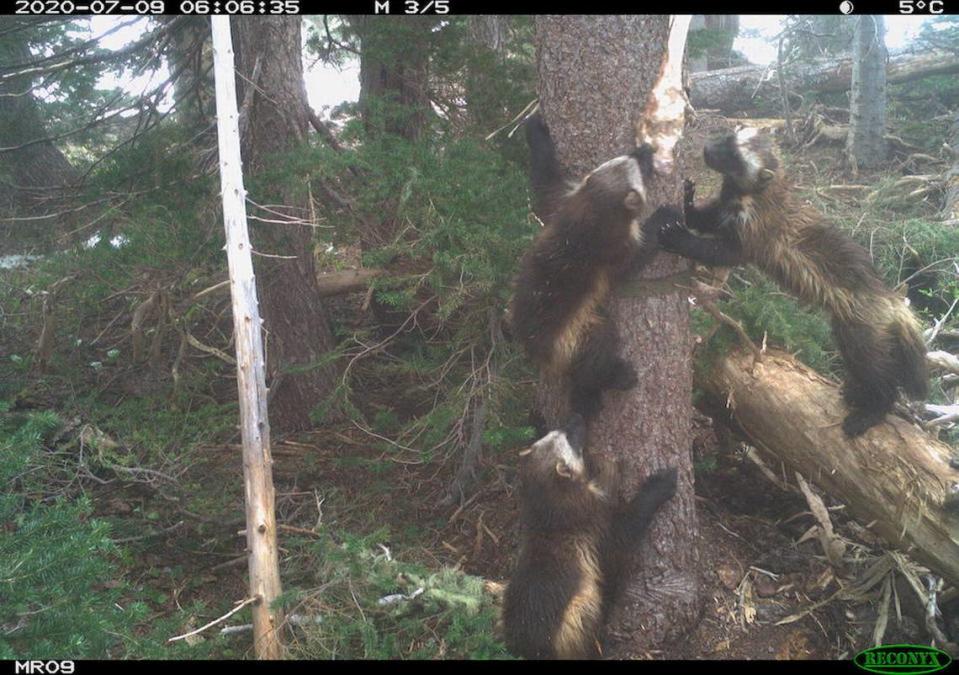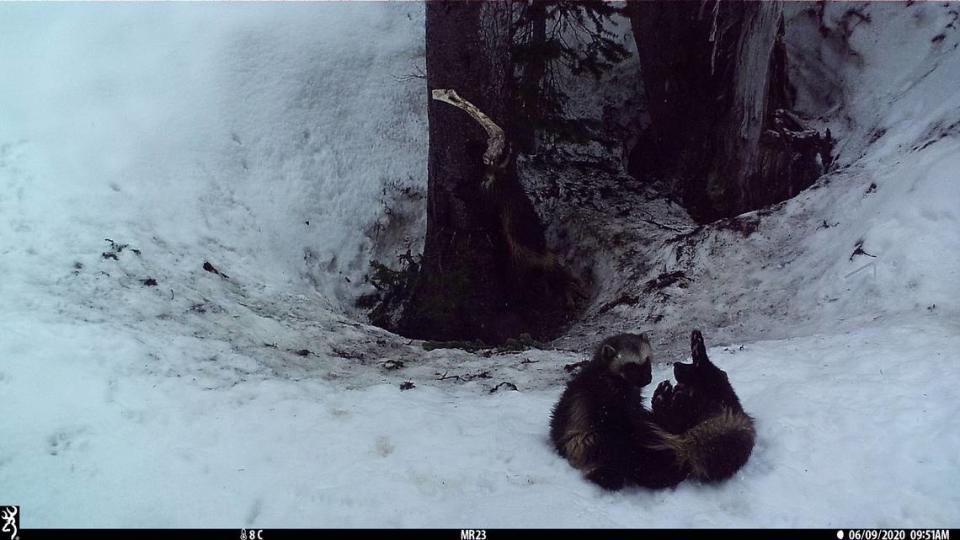Watch baby wolverines scamper as the species returns to Mount Rainier after 100 years
Extremely rare wolverines have returned to Mount Rainier National Park for the first time in more than 100 years, park officials said.
Scientists found the first reproductive female wolverine and two of her offspring inside the park. With the sightings, scientists think wolverines might start returning to park land.

“It’s really, really exciting,” Mount Rainier National Park Superintendent Chip Jenkins said in a Thursday news release. “It tells us something about the condition of the park— that when we have such large-ranging carnivores present on the landscape that we’re doing a good job of managing our wilderness.”
Wolverines are very rare in the U.S., with a North American population ranging from 6.2 wolverines per 600 square miles to 0.3 per 600 miles in low-quality habitat, park officials said. There are only 300 to 1,000 wolverines in the continental U.S.
In 2018, scientists put up camera stations to photograph and identify wolverines based on the pattern of fur on the animal’s chest. The unique pattern can help identify them. One wolverine was identified as a nursing female, park officials said.

Wolverines shouldn’t be disturbed, park officials said. Even low-impact recreation can disturb denning wolverines, and park visitors should recognize the signs of wildlife.
“Backcountry enthusiasts, skiers, snowshoers and snowmobilers can help us monitor wolverines and contribute to studying their natural return to the Cascade ecosystem,” said Tara Chestnut, a park ecologist. “Wolverines are solitary animals and despite their reputation for aggressiveness in popular media, they pose no risk to park visitors. If you are lucky enough to see one in the wild, it will likely flee as soon as it notices you.”

